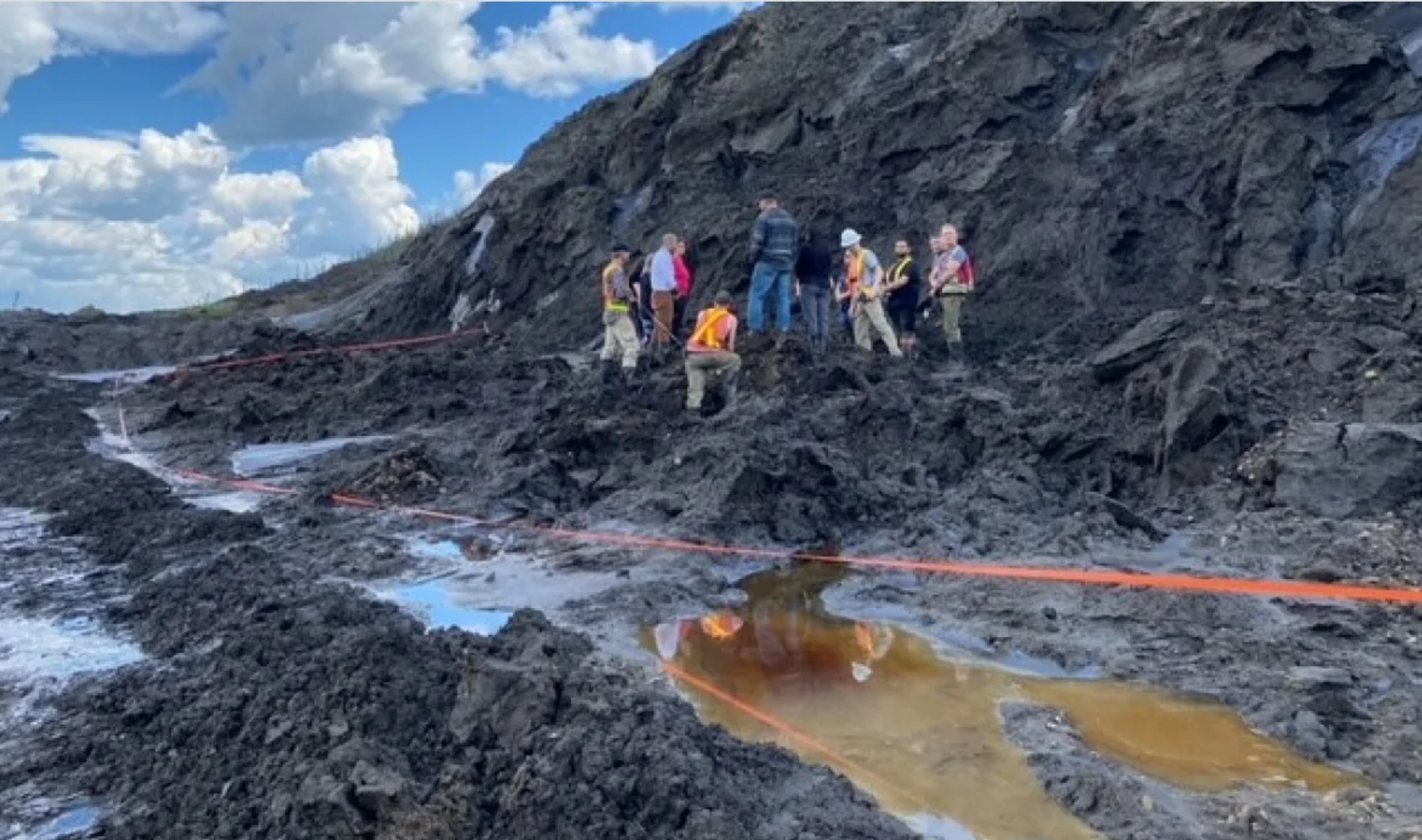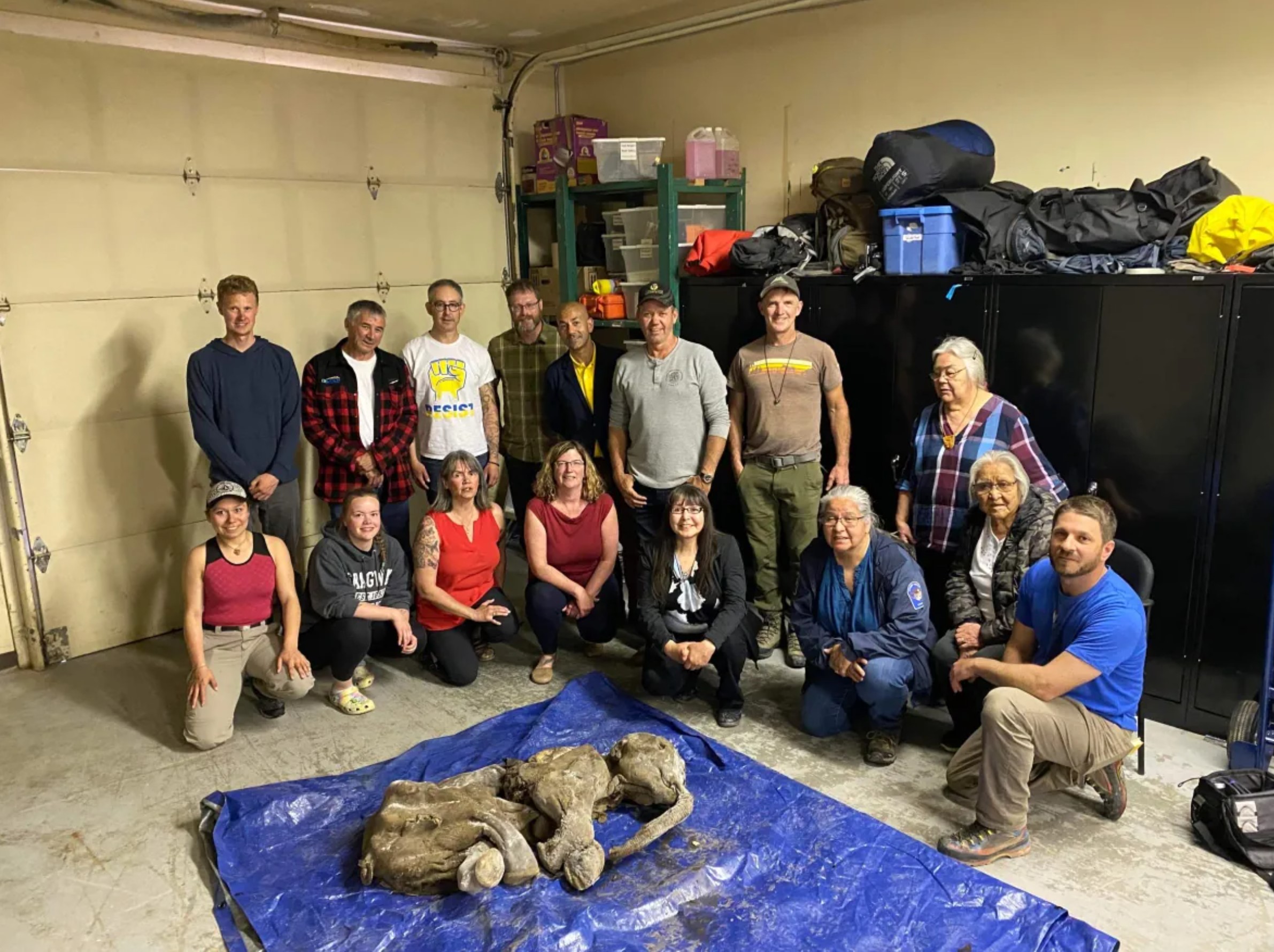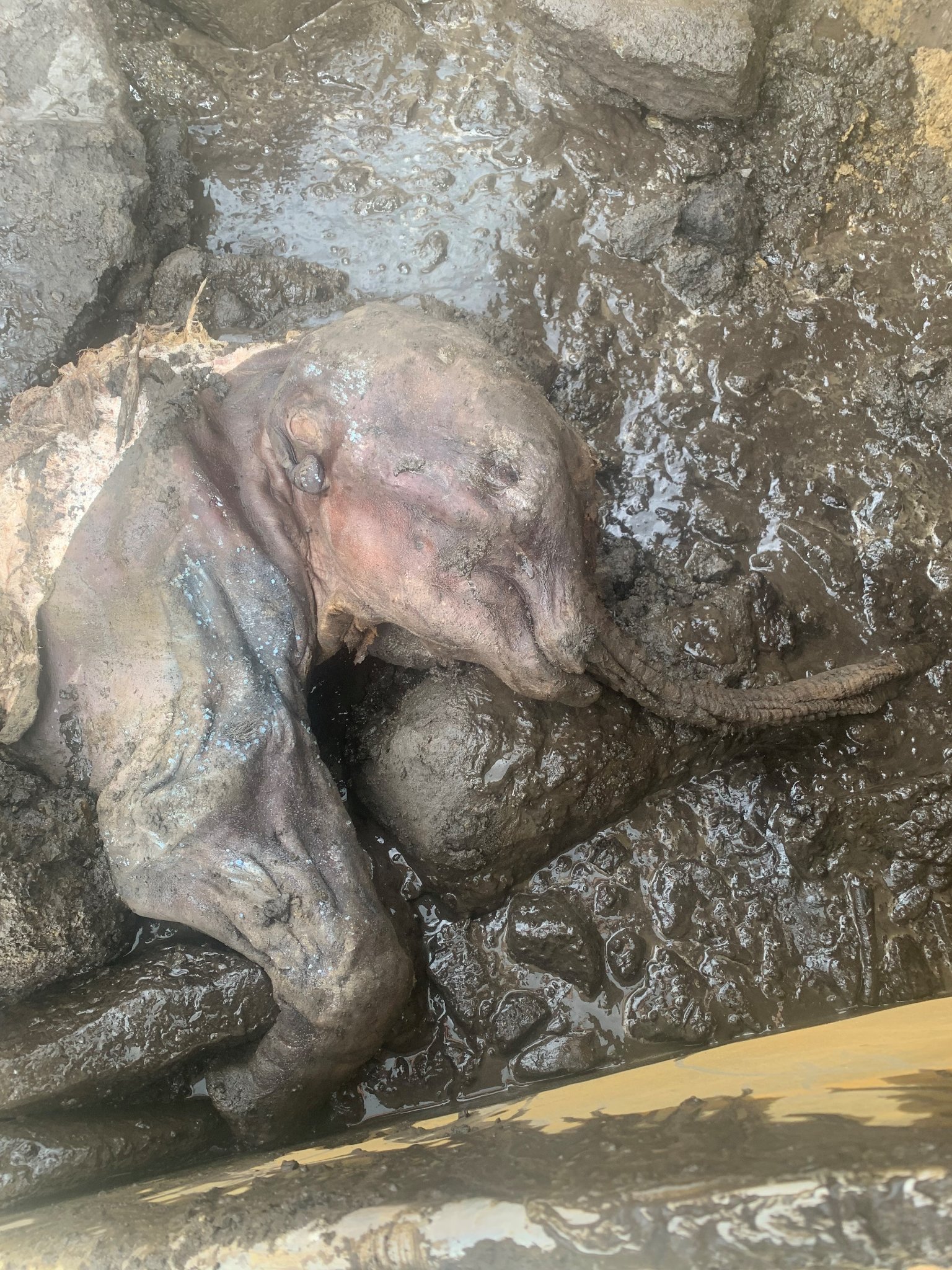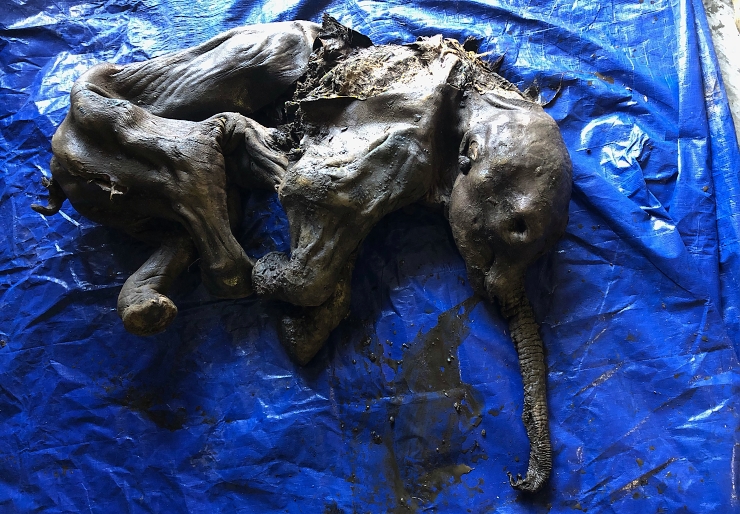Díky za článek, moc zajímavé. 
Gold prospectors discover a mammoth cub, the first in North America and only the second in the world
Categories: Nálezy nejenom s detektorem kovů v USA, severní a jižní Americe
A perfectly preserved baby mammoth, including soft tissue or fur, was discovered in the Yukon goldfields south of Dawson City in northwestern Canada. It is the first complete baby mammoth ever found in North America, and only the second in the world after the Siberian discovery in May 2007.
The young female woolly mammoth was discovered on June 21 by miner Tavis Ikswaled. He was using a backhoe to scoop out the muddy deposits of the Treadstone gold mine in Eureka Creek when he came across something big. He alerted his boss, who immediately stopped work and sent a picture of the find to Yukon paleontologist Dr. Grant Zazula. He immediately recognized the baby mammoth and contacted two geologists within driving distance who examined the site and retrieved the baby.
According to Zazula, the miner made the most important paleontological discovery in North America: "It has a trunk, a tail, tiny ears. She's got this little grasping end of the trunk that she could pluck grass with. She's perfect and she's beautiful," Zazula said. He added that the geologists who found her spotted part of her gut with grass. "Thus, it is obvious what she was doing in the last moments of her life. She was probably just a few steps away from her mother, but she ventured out a bit, eating grass and drinking water while stuck in the mud. And the event from being trapped in the mud to her death was very, very quick," he concluded.
The Yukon mammoth female was discovered on the territory of the Trʼondëk Hwë Indigenous NationChʼin, whose elders named her Nun cho ga, meaning "big animal cub." She was only about 30 to 35 days old at the time of her death. The geological context suggests that she lived and died between 35,000 and 40,000 years ago, during the last Ice Age. The permafrost preserved the young female in good condition with her soft tissues intact, from the trunk to the tip of her tail. In total, she is 140 cm long, slightly larger than her "conspecific" from Siberia.
The woolly mammoth evolved from the steppe mammoth 400,000 years ago. They resembled today's elephants, measuring "only" about 3.5 metres in height and weighing between 6 and 8 tonnes. They had long, curved tusks and nearly a metre of hair. They lived in northern and western Europe, North America and northern Asia during the last Ice Age. They probably became extinct three and a half thousand years ago, when the last individuals were still surviving on Wrangel Island, about 150 km off Russia's northeast coast.
Roman Nemec
Sources: cbc.ca, yukon.ca, wikipedia.org

Place of discovery

Members of Trʼondëk Hwëchʼin and representatives of the Yukon government, Treadstone Mine and the University of Calgary with Nun cho ga

In situ mammoth calf

A young female mammoth just after being removed from the mud
The article is included in categories:







 Vlá´do ty už se vidíš jak bys ho telil
Vlá´do ty už se vidíš jak bys ho telil  vlastně mamutil
vlastně mamutil